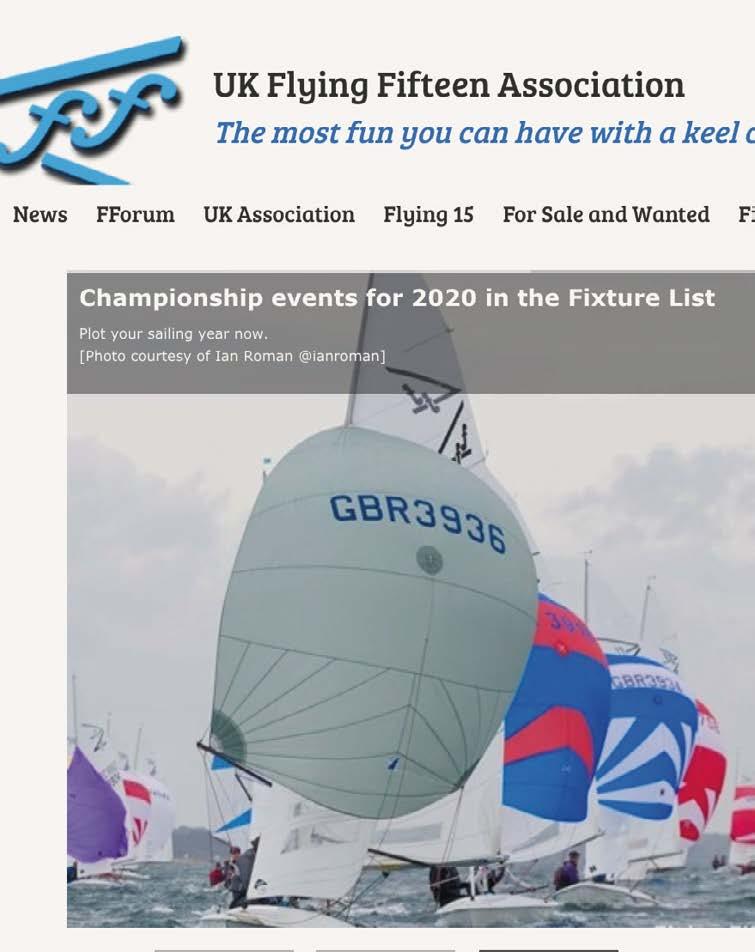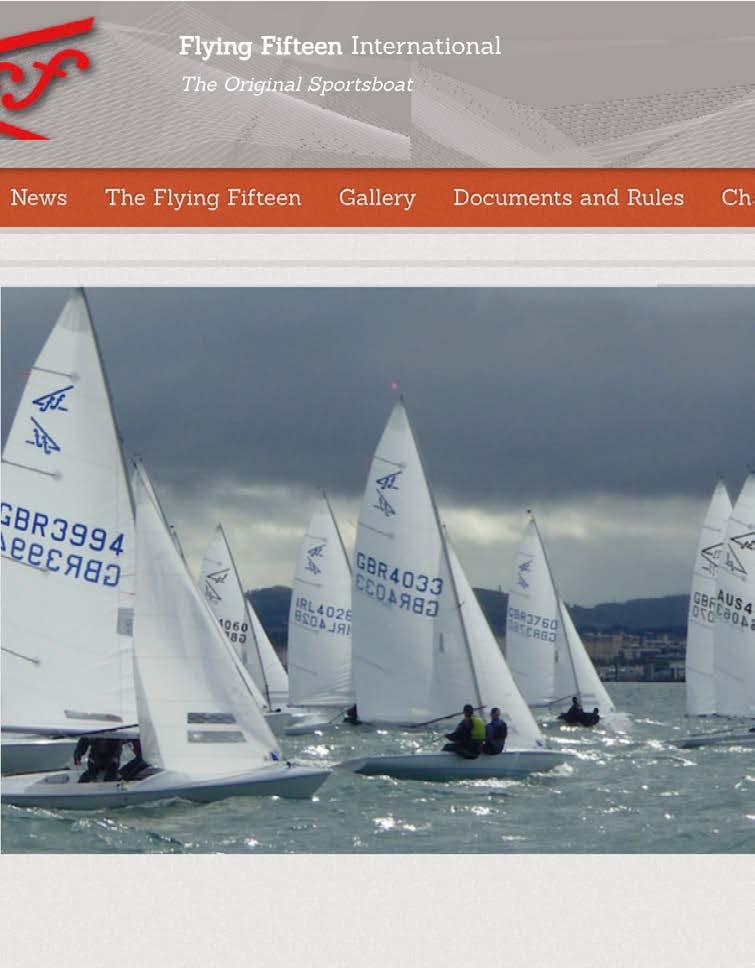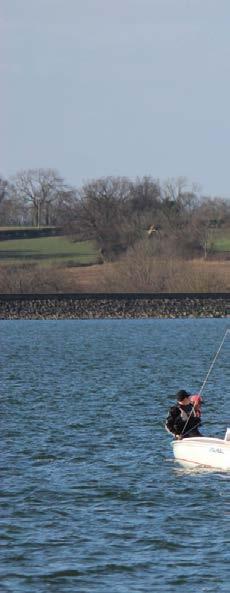
5 minute read
Website stories
Autumn 2019 was memorable for me as I realised the time had come to update the two fleet websites I manage for the association; the UK one – flying15.org.uk and the Worldwide one – flying15.org.

Advertisement
This article explains why this was necessary in both non-technical and technical terms, why this had to happen and the issues to be addressed along the way.
History of the Associations Websites
Th e UK website was conceived and developed in 2012 in partnership with my predecessor as Publicity officer, Richard Jones from Datchet SC. It may be difficult to remember that far back, but the associations website at that time was tightly controlled and it proved so hard to get new content onto it that Richard started the Flying 15 Blog site (for both Datchet SC and the rest of the UK) so as to have somewhere to post up to date news.
The new 2012 website was finally launched in early 2013 just as Google decided that mobile friendly websites were the preferred solution. The 2012 website was not mobile friendly! In 2018 we undertook a small piece of work to improve that situation, but it was just tinkering at the edges and I knew a full rebuild was required at some stage.
The final driver that meant the site needed to be update was the decision by Google to retire some of the web browser technologies the 2012 site used (such as Flash). Some of those older technologies also meant we could not keep the Content Management System (CMS) up to the latest specifications, therefore it was imperative something was done.
The FFI website came about after the 2015 worlds in France. I was asked by Peter Rooke (FFI President) what I could do to rescue that website from a similar situation to that we had found the UK website in; a problem in getting new and updated content onto the site.
We also had a problem in that the flying15.org domain name was under the management of someone in the UK who had not let the Australian builder of the previous site use that domain. You may remember F15international.com as the web address. Well I managed to resolve that issue whilst we were building the new FFI website and hence the site you saw until this autumn which visually was pretty much the same as the previous one.
The work this Autumn
In order to produce websites with a rejuvenated look and feel, modern technological components and content that worked across all sizes of screen took a lot of work. Across the two websites it occupied my time for the bulk of the working day over 8 weeks. Not commercially affordable by the Association, which is why it is good I am now retired!
Selecting the graphical look and feel and technology ended up with me using the products of a team in Croatia whose range of technology all works together, and also gave me import tools so that we could easily migrate older news items across to the new website.
Having completed the move then I produced training videos for the various actions required by other Editors on the website; such as creating a Boats for Sale advert, Updating the Fixture Lists, and How to Edit Sailwave Results tables so they are accessible on mobile devices!
What technology is used
For those of a non-technical disposition, please now move onto the next article!!
The Content Management System (CMS) we use is called DNN (formerly DotNetNuke). This is based on Microsoft .net technology. I have been working with this technology since 2006 and it has matured into a very user friendly and highly configurable platform. It is also highly secure and is a platform of choice for those requiring such features such as major corporate and government organisations.
It is also an Open Source product, meaning we can use it for free! There is a very helpful community of developers around this technology. You can see this at work at www. dnncommunity.org.
Choosing the correct hosting company (we use Managed; www.managed.com) also means that a base level of technical support comes with our subscription. I also use Cloudflare as a Content Distribution Network (www.cloudflare.com). This service ensures that wherever in the world you access the website from you get a quick response and it also protects the websites from attack. I suggest you look at their website to learn the whole story.
Because of the way DNN is constructed content layout decisions are always very fluid and can even be changed after the launch of the website. This separation of content and layout is one that was built into the product from the start and it has proved to be a major strength of the product.
If you wish to discuss more about why we chose this product rather then other well-known CMS platforms such as WordPress then I am always happy to have a chat over the phone or in the bar after sailing.
If you would like support on developing your own website for your sailing group, then just ask. I am already supporting Flying 15 France in such a project.


Simon Thompson Flying15 Webmaster
Draycote Water Sailing Club is a members’ club. We are a friendly bunch and are always ready to welcome new members.
The club is open 364 days a year for dinghy sailing and windsurfing. Class racing is held on Sundays throughout the year and on Wednesday evenings through the summer.
The club is an RYA recognised training centre offering a wide variety of professionally run courses from April to October. Rescue services operate whenever the water is open.
Draycote Water is a 650-acre (260 hectares) reservoir set high in the rolling Warwickshire countryside, with good access from M1, M6, M45 and M40 motorways. Th e water is roughly 1 km North South and 2 km East West. Enough room for open meetings and club racing to take place at the same time.
The clubhouse is large and well equipped, with lounge/bar, catered wet-bar, chandlery and changing rooms. After sailing, our members can relax in comfort with WiFi internet access and AV facilities in the lounge.
History
Draycote reservoir was constructed in the mid-1960s under the direction of Rugby Corporation Water Department.
A small group of people led by Sir Charles Barratt had the vision of a sailing club on the reservoir and in 1968 called for a meeting of interested people by public notice in the local Press to be held in the Rugby Benn Memorial Hall.
Bearing that there was little water in the reservoir at that time the response was overwhelming which encouraged those founder members to approach Rugby Water Board and negotiate a lease which resulted in Draycote Water Sailing Club coming into being in 1969. The lease was conditional, and the Club had to commit to a variety of works and site development to confirm the long-term intent to base a sailing club on the site.
Before there was even enough water to launch a boat, the Club had 1,200 members and the list was closed to new entrants. Sailing first took place on the Whitsun Bank Holiday in 1969. From then on the Club was open for sailing and racing on Saturdays and Sundays as well as Wednesday evenings. By the following year, a variety of boats were being sailed, including the Mirror, GP14, Enterprise, Fireball, Finn, Merlin Rocket, Lark and Kestrel. Other fleets were added in subsequent years: Flying Fifteens in 1972, International OK in 1973, Lasers and Wayfarers in 1975, and in 1977, Solos and 505s.
Tragically, Sir Charles Barratt did not live to see the opening of the clubhouse, dying after a short illness on 10 February 1971, aged 60. The clubhouse was officially opened by Lady Barratt on 26 June that year and the inaugural Sir Charles Barratt Memorial Trophy race was held that day. Lady Barratt remained a stalwart supporter of the club and appears in many club photographs presenting club trophies.
Pumping of water began in October 1969 and, 12 months later members were being advised to move their boats above the rising waterline.









